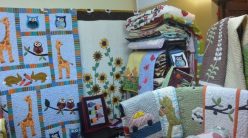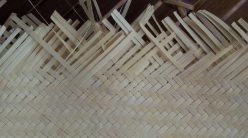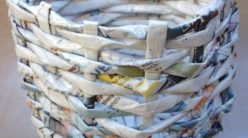Natural fiber craft materials come from nature. The natural fiber material referred to is organic material that is not reprocessed through the process and the addition of chemicals that keep its authenticity maintained and prioritized. In general, fiber is used as a raw material for making yarn or fabric which then becomes clothes or crafts. Craft products in the community have their own characteristics. Usually it is depend on the type of natural material used. In general, fabrics from natural fibers have almost the same character: strong, dense, easily wrinkled, and resistant to ironing.
Plant Fiber
Not all plants have content that can be processed into natural fibers. Plant fibers have high chemical content of cellulose. Cellulose is found in plant cell walls and composed of glucose units derived from plant photosynthesis. Fibers plants can be grouped according to their plant origin:
Seed
Fibers derived from seeds consist of cotton and kapok fibers. Cotton fiber (Gossypium hirsutum) included in the fruit fiber group, which is used the most for textile raw materials.
Cotton Fiber
Cotton fiber is a fine fiber that covers the seeds of several types of Gossypium or commonly called trees or cotton plants originating from the tropics or subtropics. Cotton fibers can be spun or woven. Cotton fiber is commonly referred to as cotton textile material. Some of the properties of cotton fiber is that can absorb water, heat resistance for high temperature irons, easy to wrinkle.
Jute Fiber
Jute fiber comes from the bark of the tree trunk which is used to make sacks. Jute has been known since the time of Ancient Egypt, jute has a medium strength and luster. This fiber is the second most important fiber in the textile industry because it is indispensable in human life. Besides being made for ropes and burlap sacks, jute fiber is also needed for carpets, curtains, and paper making materials.
Flax Fiber
Flax fiber comes from the stem of linum usitatissimun. Flax fiber is commonly referred to the name of linen.
Hemp Fiber
Hemp fiber comes from the hemp plant (Boehmeria nivea), this plant is long-lived, has tall stem compared to other fiber plants, is also small and straight. Hemp fiber is usually spun into yarn or woven into cloth in Japan, while in Indonesia it is commonly used for netting, canvas, and rigging. Hemp has the general properties of cotton, which are more shiny, stronger, more absorbent, and more resistant to bacteria.
Animal Fiber
Animal fiber or it can also called protein fiber is divided into staple or filament forms. Protein fiber in staples comes from animal hair such as sheep, alpaca, camel, cashmer, mohair, rabbit, and vicuna. The most commonly used animal fiber material is wool from sheep’s fur.
Wool Fiber
Wool fibers come from animal hairs such as sheep’s wool or sheep’s hair. Based on the texture, wool fibers are grouped into three types, fine wool, medium wool, and coarse wool. All three have their own importance, as coarse wool is usually needed to make heavier textile materials. Wool is usually made for the needs of clothing, warm clothes, blankets, weaving and knitting.
Silk Fiber
Silk fibers come from insects called Lepidoptera formed from the cocoons of silkworms. Silk fibers are in filaments produced by silkworm larvae when they form cocoons. Silk has several properties, including high absorption, high strength, soft grip, luxurious and beautiful appearance, also not easy to wrinkle.
–sh





